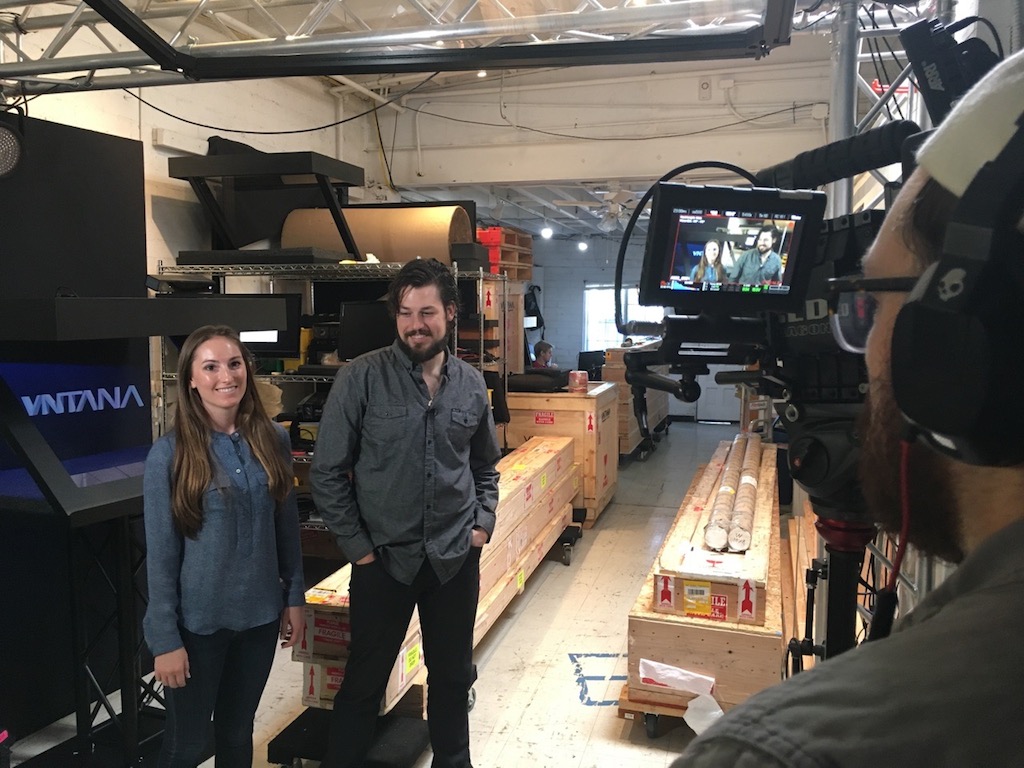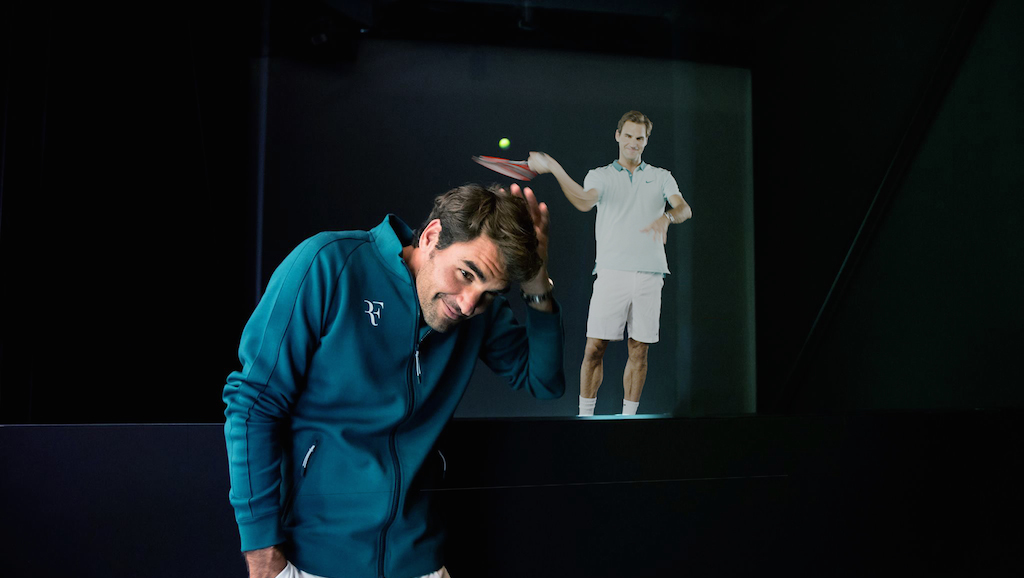We’ve been taking static selfies for years. Ashley Crowder, a 2004 graduate of Langley High School in Fairfax County, wants to start making talking, moving holograms of people that let users interact with brands and celebrities.
Crowder’s California-based company collaborated with Microsoft to launch a new hologram product Wednesday. The “Hollagram,” as she calls it, uses custom hardware to project a 2-D image onto a clear screen–”so it looks like that person or object is floating there or standing there,” Crowder says.
The technology lets users make holograms of themselves (“Hollagram Selfies”) and can also project images of celebrities and brands– i.e., you can have a virtual Justin Bieber perform at a bat mitzvah or the Dell computers logo at a trade show).
Crowder started her company, called VNTANA, with her friend Ben Conway in 2012, after getting her master’s in engineering from the University of Southern California. She’s an avid music fan and originally had the idea of getting artists to perform in multiple places at once by streaming their holograms at different live venues. Since, she’s worked for clients like Pepsi and Mercedes-Benz to help those companies use the technology to market their products.

“To make it interactive, we’re using different [infrared] centers that track people, and then we’ve written code that will respond to what the person’s movements are,” Crowder says.
For example: VNTANA made a hologram of Roger Federer at the US Open last September. Passersby could watch their “selfie” hologram serve up tennis balls to a projected image of the Swiss tennis champion.
“It’s just like [in the movie] Minority Report,” Crowder says. “Moving your hands will make different things happen. In this case if you made a fist, a virtual ball appeared in your hand, you could throw it, and Roger would hit it.”
Crowder says her company will have a hologram of the singer Rob Thomas for his upcoming tour, and hopes to make more renderings of celebrities in the coming months. “Imagine being able to throw a baseball to Derek Jeter and get a video of that,” she says. “Those are the different types of experiences we’re creating.”
The “Hollagram” can also stream live conferences. “We have CEOs of big companies who maybe don’t have time to fly to China,” Crowder says, “but we can have their hologram there, so you still have that face-to-face experience.”
Crowder says her company is mainly focused on the “corporate application” of its technology and tries to commission it at trade shows. For instance, clients can use the product to let patrons customize a holographic shoe, or even a car, remotely before buying it. Crowder says this technology can give clients data on how consumers are engaging with products.















